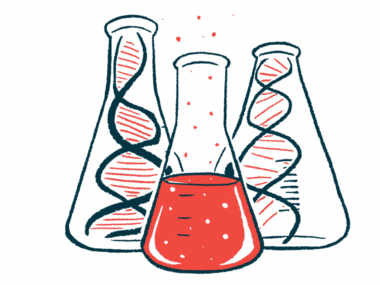International Study Finds Signs of Kidney Damage in AHP Patients
Written by |

People with acute hepatic porphyria (AHP) tend to have higher-than-normal levels of markers for kidney injury, new research suggests.
The findings were shared in a virtual poster, titled “Renal Injury Biomarkers Are Elevated in Acute Hepatic Porphyria,” presented at the American Society of Nephrology Kidney Week 2021.
Porphyria is caused by genetic mutations that lead to problems in the production of heme, a molecule used to transport oxygen in living cells. As a consequence, intermediary molecules used to create heme build up to toxic levels, damaging multiple tissues and organs.
AHP encompasses all porphyria types that are characterized by acute attacks, the most common being acute intermittent porphyria. Patients who carry AHP-causing mutations and have high levels of heme intermediary molecules, but are not experiencing acute attacks, are known as chronic high excreters (CHE).
The buildup of heme intermediates can cause damage to the kidneys, and it is estimated that 30%–60% of AHP patients have kidney disease. The kidneys are important for filtering bodily fluids, helping to remove toxins from the bloodstream, while retaining nutrients and water.
In the study, a team of scientists in the U.S., France, and Sweden conducted proteomic analyses of blood samples from AHP patients and healthy controls who participated in different clinical trials, including the Phase 1 ALN-AS1-001 study (NCT02452372), the Phase 3 ENVISION trial (NCT03338816), and the natural history study EXPLORE (NCT02240784). Proteomics is a form of analysis that basically aims to globally assess the levels of different proteins found in a sample.
Results showed that, of the 1,196 proteins assessed, 212 were present at significantly different levels in AHP patients compared with healthy controls.
The two proteins with the largest differences were kidney injury molecule-1 (KIM1) and matrix metalloproteinase-7 (MMP7). Both of these proteins have previously been shown to be markers of kidney damage.
Three other proteins that are known markers of kidney damage — neutrophil gelatinase-associated lipocalin, cystatin C (CST3), and chitinase-3-like protein 1 — were also present at significantly higher levels in AHP patients.
Levels of KIM1, MMP7, and CST3 were also significantly higher in CHE than in healthy controls.
Statistical analyses showed that each of these kidney damage markers was present at significantly higher levels in AHP patients with kidney disease, compared with those who did not have kidney disease.
Additionally, among AHP patients, the levels of these markers were statistically associated with estimated glomerular filtration rate, a measure of kidney function.
“Renal injury biomarkers may aid in diagnosing and managing kidney disease in patients with AHP suffering from recurrent acute attacks as well as chronic high excreters,” the researchers wrote.






